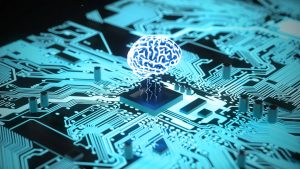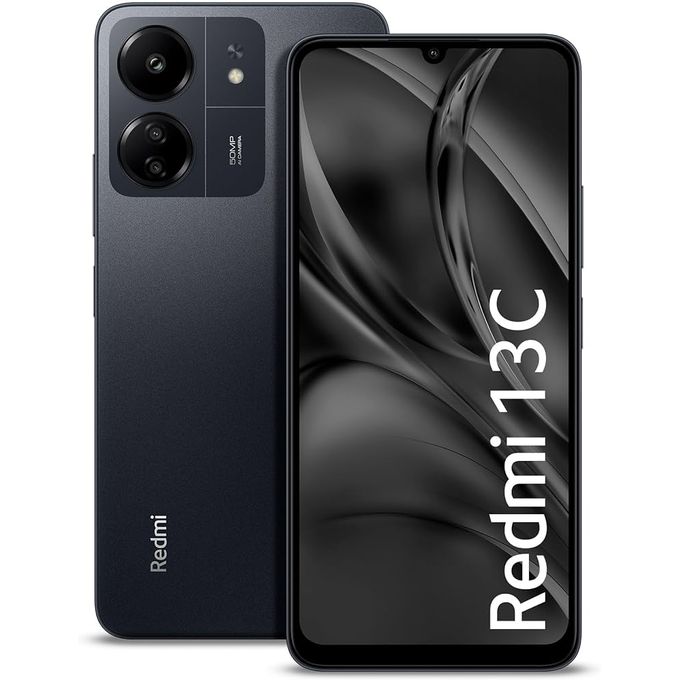Neurological Enhancement and Brain-Machine Interfaces

The human quest for progress has always been intertwined with a desire to transcend limitations. From the invention of the wheel to the exploration of space, we have continuously sought to augment our capabilities and expand our horizons. Now, a new frontier beckons, one that lies within the intricate folds of our own brains: neurological enhancement. Coupled with the burgeoning field of Brain-Machine Interfaces (BMIs), this pursuit holds the potential to revolutionize how we think, learn, interact with the world, and even define what it means to be human.
Neurological enhancement encompasses a broad spectrum of techniques aimed at improving cognitive, sensory, and motor functions by directly influencing the nervous system. This is not merely about treating deficits or restoring lost abilities; it’s about pushing the boundaries of human potential, unlocking latent capabilities, and forging new pathways for interaction with technology and the world around us. Brain-Machine Interfaces, acting as the crucial bridge between our neural activity and the external world, are poised to be the key enablers of this transformative era.
Understanding the Landscape of Neurological Enhancement
The realm of neurological enhancement is diverse, encompassing both non-invasive and invasive approaches, each with its own set of mechanisms, applications, and ethical considerations.
Non-Invasive Techniques: These methods modulate brain activity from outside the skull, offering a less risky entry point into cognitive enhancement.
-
Transcranial Magnetic Stimulation (TMS): TMS uses magnetic pulses to stimulate specific areas of the brain. It has shown promise in treating depression, anxiety, and even enhancing certain cognitive functions like working memory and attention. By carefully targeting neural circuits, TMS can temporarily alter their excitability, leading to improved performance in specific tasks.
-
Transcranial Direct Current Stimulation (tDCS): This technique applies a weak electrical current to the scalp via electrodes. The subtle electrical field modulates neuronal firing rates, either increasing or decreasing activity depending on the polarity of the stimulation. Research suggests tDCS can enhance learning, memory, and problem-solving abilities, and is being explored for its potential in rehabilitation after stroke or brain injury.
-
Neurofeedback: This training technique allows individuals to learn to self-regulate their brain activity in real-time. By providing visual or auditory feedback based on their EEG (electroencephalography) signals, users can consciously influence their brainwave patterns associated with focus, relaxation, and other mental states. While requiring active participation and training, neurofeedback offers a non-pharmacological approach to improving attention, reducing anxiety, and enhancing cognitive control.
-
Sensory Enhancement Technologies: These technologies focus on augmenting our sensory perception. Examples include advanced hearing aids that filter noise and enhance specific frequencies, or virtual and augmented reality systems that can overlay information onto our visual field, providing enhanced awareness and contextual understanding. While not directly manipulating neural activity in the same way as TMS or tDCS, these technologies interface with our sensory organs and consequently influence neural processing and perception.
Invasive Techniques: These methods involve direct interaction with the brain through surgical implantation of devices. While carrying higher risks, they offer the potential for more precise and powerful modulation of neural activity.
-
Deep Brain Stimulation (DBS): Primarily used to treat neurological disorders like Parkinson’s disease, essential tremor, and dystonia, DBS involves implanting electrodes in specific brain regions and delivering electrical impulses. While its current applications are largely therapeutic, ongoing research explores its potential for cognitive enhancement in healthy individuals, particularly in areas like motivation and executive function.
-
Implantable Brain-Computer Interfaces (BCIs): These devices are surgically implanted in the brain to directly record neural signals and, in some cases, stimulate specific brain regions. While the primary focus has been on restoring lost motor function and communication in individuals with paralysis, the technology holds immense potential for cognitive enhancement by creating a direct communication pathway between the brain and external devices.
The Symbiotic Relationship: Brain-Machine Interfaces as the Gateway to Enhancement
Brain-Machine Interfaces are the linchpin in the realization of advanced neurological enhancement. They act as bidirectional communication channels, allowing the brain to interact directly with external devices and vice versa. This seamless integration opens up possibilities that were once confined to the realm of science fiction.
How BMIs Work:
At their core, BMIs function by:
- Signal Acquisition: Recording neural activity using various sensors, ranging from electrodes placed on the scalp (EEG) to microelectrode arrays implanted directly in the brain tissue.
- Signal Processing: Decoding the recorded neural signals using sophisticated algorithms to extract meaningful information about the user’s intentions, thoughts, or cognitive states.
- Device Control: Translating the decoded neural signals into commands that control external devices, such as prosthetic limbs, computers, or communication systems.
- Feedback (in some cases): Providing sensory or other forms of feedback to the user, allowing them to learn to control the BMI more effectively and experience the consequences of their neural commands.
The Convergence of BMI and Neurological Enhancement:
The synergy between BMIs and neurological enhancement is profound. BMIs can be used not only to control external devices but also to deliver targeted stimulation for cognitive enhancement. Imagine a BMI that can:
- Enhance Learning and Memory: By directly stimulating brain regions involved in memory consolidation during learning, or by providing real-time feedback on neural activity associated with focused attention.
- Boost Sensory Perception: By processing and relaying sensory information in a way that amplifies or refines our natural senses.
- Improve Motor Skills: By providing direct neural control over prosthetic limbs with enhanced dexterity and sensory feedback, blurring the lines between biological and artificial.
- Facilitate Communication: By decoding thoughts and intentions directly into text or speech, bypassing the limitations of traditional communication methods.
- Unlock New Forms of Human-Computer Interaction: By creating a truly intuitive and seamless interface where our thoughts can directly interact with the digital world.
The Promise and the Perils: Navigating the Ethical Landscape
The immense potential of neurological enhancement and BMIs is accompanied by a complex web of ethical, social, and philosophical considerations that demand careful attention. As we venture further into this transformative territory, we must grapple with questions such as:
- Safety and Efficacy: What are the long-term risks associated with invasive and non-invasive neurological enhancement techniques? How can we ensure their safety and demonstrate their efficacy through rigorous scientific research?
- Equity and Access: Will these technologies be accessible to all, or will they exacerbate existing social inequalities, creating a divide between the “enhanced” and the “unenhanced”? How can we ensure equitable access and prevent the emergence of a neuro-elite?
- Autonomy and Consent: How do we ensure that individuals fully understand the implications of neurological enhancement and provide truly informed consent? What happens when these technologies become more integrated into our lives and potentially influence our sense of self?
- Identity and Personhood: How might neurological enhancement alter our sense of identity, agency, and what it means to be human? Will the integration of technology into our brains blur the lines between human and machine in fundamental ways?
- Privacy and Security: How can we protect the vast amounts of neural data that will be generated by BMIs? Who will have access to this information, and how can we prevent its misuse?
- Societal Impact: How will widespread neurological enhancement impact education, employment, social interactions, and the very fabric of society? Are we prepared for the potential societal shifts that these technologies may bring?
- Regulation and Governance: What regulatory frameworks are needed to guide the development and deployment of neurological enhancement technologies in a responsible and ethical manner? How can we foster innovation while mitigating potential risks?
The Path Forward: Responsible Innovation and Collaborative Dialogue
The journey towards enhanced minds is not a predetermined one. It is a path we are forging, and the choices we make along the way will shape the future of humanity. To navigate this complex landscape responsibly, we need:
- Robust Scientific Research: Continued investment in fundamental and translational research to better understand the brain and develop safe and effective enhancement technologies.
- Ethical Deliberation: Open and inclusive dialogue involving scientists, ethicists, policymakers, and the public to address the ethical, legal, and social implications of neurological enhancement.
- Responsible Innovation: A commitment to developing and deploying these technologies in a way that prioritizes human well-being, equity, and autonomy.
- Public Education and Engagement: Raising public awareness and fostering informed discussions about the potential benefits and risks of neurological enhancement.
- International Collaboration: Working together across borders to establish ethical guidelines and regulatory frameworks that promote responsible innovation on a global scale.
Conclusion: Embracing the Potential, Navigating the Challenges
Neurological enhancement and Brain-Machine Interfaces stand at the cusp of a transformative era. They hold the promise of unlocking human potential in unprecedented ways, offering solutions to neurological disorders, augmenting our cognitive and sensory capabilities, and forging new connections between our minds and the world around us.
However, this journey is not without its challenges. The ethical, social, and philosophical implications are profound and demand careful consideration. By embracing a spirit of responsible innovation, fostering open dialogue, and prioritizing human well-being, we can strive to harness the immense potential of these technologies while mitigating their risks.
The dawn of enhanced minds is upon us. It is our collective responsibility to ensure that this dawn illuminates a future where these powerful tools serve to elevate the human experience for all, rather than exacerbating existing inequalities or compromising our fundamental values. The conversation has begun, and the future of our minds, and perhaps our very humanity, hangs in the balance.











Post Comment